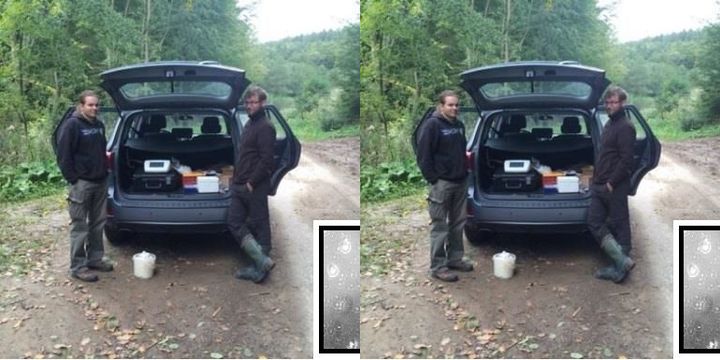Field detection of disease
The Problem
The global wildlife trade is actively spreading a deadly disease that could cause hundreds, if not thousands, of the world’s 7,000 known species of amphibians to go extinct unless we take immediate action to combat its spread. This disease is caused by two species of pathogenic chytrid fungi, Batrachochytrium dendrobatidis (Bd) and Batrachochytrium salamandrivorans(Bsal), which were recently introduced to amphibian populations. These fungi thrive in wet cool environments, and amphibians in at least 60 countries have already been exposed. Every year, millions of amphibians are traded globally for use as pets, food, and research, without any required disease screening prior to transport. In each shipment, the number of amphibians can range from one to many thousands and must be quickly released to the importer. Bd and Bsal are invisible to the naked eye, and infections rarely cause visible symptoms prior to death. Therefore, genetic sampling and laboratory analysis are the most common detection method. Rapid, cost-effective chytrid detection methods are urgently needed to stop infected animals and contaminated shipping materials from entering the USA to reduce the threat of disease to native biodiversity. To try and understand what we are trying to achieve and how the Conservation X Labs funding we received was used, please see the following video: https://youtu.be/fIYFlPO-LPE
Our Proposal
The ability to detect pathogenic infection via the use of molecular techniques has been invaluable in the study of epidemiological research. However, to date, there has only been limited methodology that could adequately be implemented in the field. This project outlines a simple method of fast extraction and rapid isothermal amplification of a targeted sequence which enables accurate detection of a pathogen in this case chytrid fungus, both within a laboratory environment and while on location. Currently the most widely used assay method for testing for the presence of B. d. is via the use of qPCR however this has limitations. Firstly a number of B. d. lineages cannot be detected using the standard methodology); secondly, it is prone to phenolic compound inhibition, and thirdly assays have to be carried out in the laboratory by personnel trained in qPCR often taking days to weeks to be processed enabling time for DNA degradation and not enabling any form of intervention with potentially infective hosts. In collaboration with OptiGene Ltd, we set out to develop a diagnostic LAMP based genetic method that could be used in the field and simple enough to be used by anyone. Our preliminary work includes a method for detecting B.d and B.sal in 10 minutes from a non-invasive swabbing method. Thanks to funding provided by Conservation X Labs, we have managed to carry out field based analysis of chytrid fungus as documented in the following video: https://youtu.be/LYxd4DLBMFw
We Assume that...
The method will detect all forms of amphibian chytrid
The method will be adopted by people working with amphibians
Sample sites are available to test the assay
Constraints to Overcome
The biggest barrier faced is the funding of reagents to enabling the method to be thoroughly tested. Access to sample sites, controls etc. are already available.
Current Work
Have a thoroughly validated method. Confirm validity of eDNA tests. Make assay available publicly Advertise method to ecological groups Develop further tests
Current Needs
Funding to cover reagent costs

